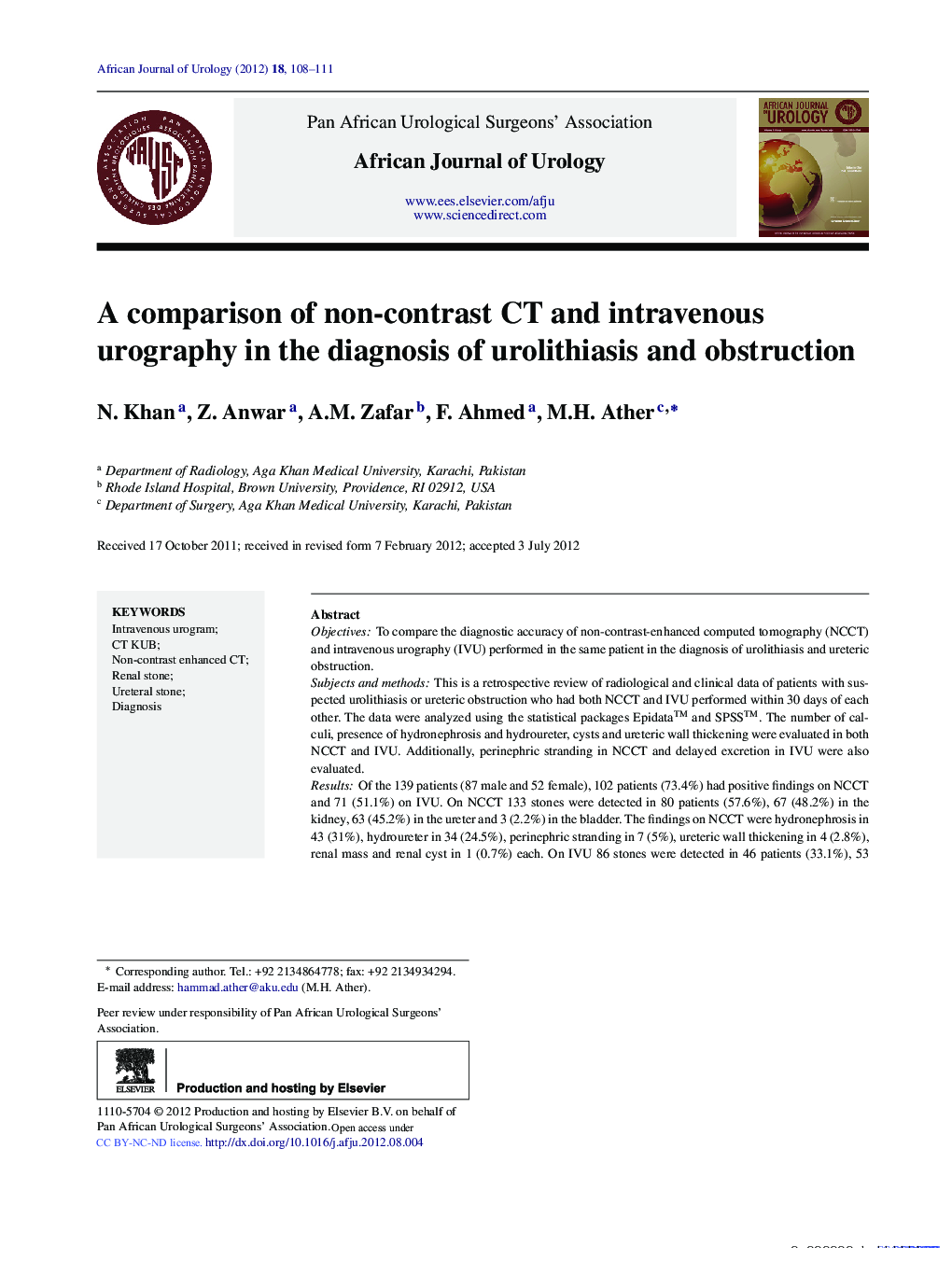| Article ID | Journal | Published Year | Pages | File Type |
|---|---|---|---|---|
| 4267754 | African Journal of Urology | 2012 | 4 Pages |
ObjectivesTo compare the diagnostic accuracy of non-contrast-enhanced computed tomography (NCCT) and intravenous urography (IVU) performed in the same patient in the diagnosis of urolithiasis and ureteric obstruction.Subjects and methodsThis is a retrospective review of radiological and clinical data of patients with suspected urolithiasis or ureteric obstruction who had both NCCT and IVU performed within 30 days of each other. The data were analyzed using the statistical packages Epidata™ and SPSS™. The number of calculi, presence of hydronephrosis and hydroureter, cysts and ureteric wall thickening were evaluated in both NCCT and IVU. Additionally, perinephric stranding in NCCT and delayed excretion in IVU were also evaluated.ResultsOf the 139 patients (87 male and 52 female), 102 patients (73.4%) had positive findings on NCCT and 71 (51.1%) on IVU. On NCCT 133 stones were detected in 80 patients (57.6%), 67 (48.2%) in the kidney, 63 (45.2%) in the ureter and 3 (2.2%) in the bladder. The findings on NCCT were hydronephrosis in 43 (31%), hydroureter in 34 (24.5%), perinephric stranding in 7 (5%), ureteric wall thickening in 4 (2.8%), renal mass and renal cyst in 1 (0.7%) each. On IVU 86 stones were detected in 46 patients (33.1%), 53 (38.1%) in the kidney, 31 (22.3%) in the ureter and 1 (1.4%) in the bladder. The findings on IVU were hydronephrosis in 31 (22.3%), hydroureter in 18 (13%), delayed excretion in 5 (3.6%), renal cyst and ureteric wall thickening in 1 (0.7%) each. Incidental findings were more common on NCCT (23/139, 16.6%) than IVU (2/139, 1.4%).ConclusionsNCCT compared with IVU had a higher detection rate for ureterolithiasis, especially for stones in the distal ureter. An added benefit of NCCT was the detection of significant additional findings.
